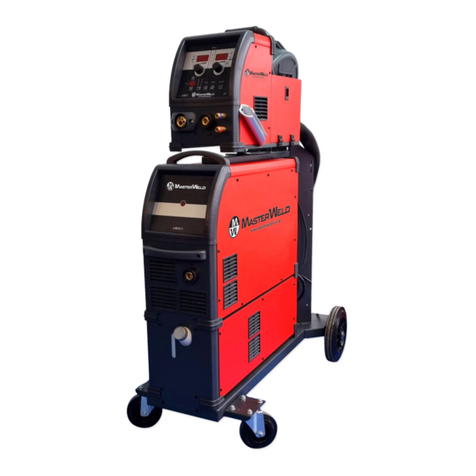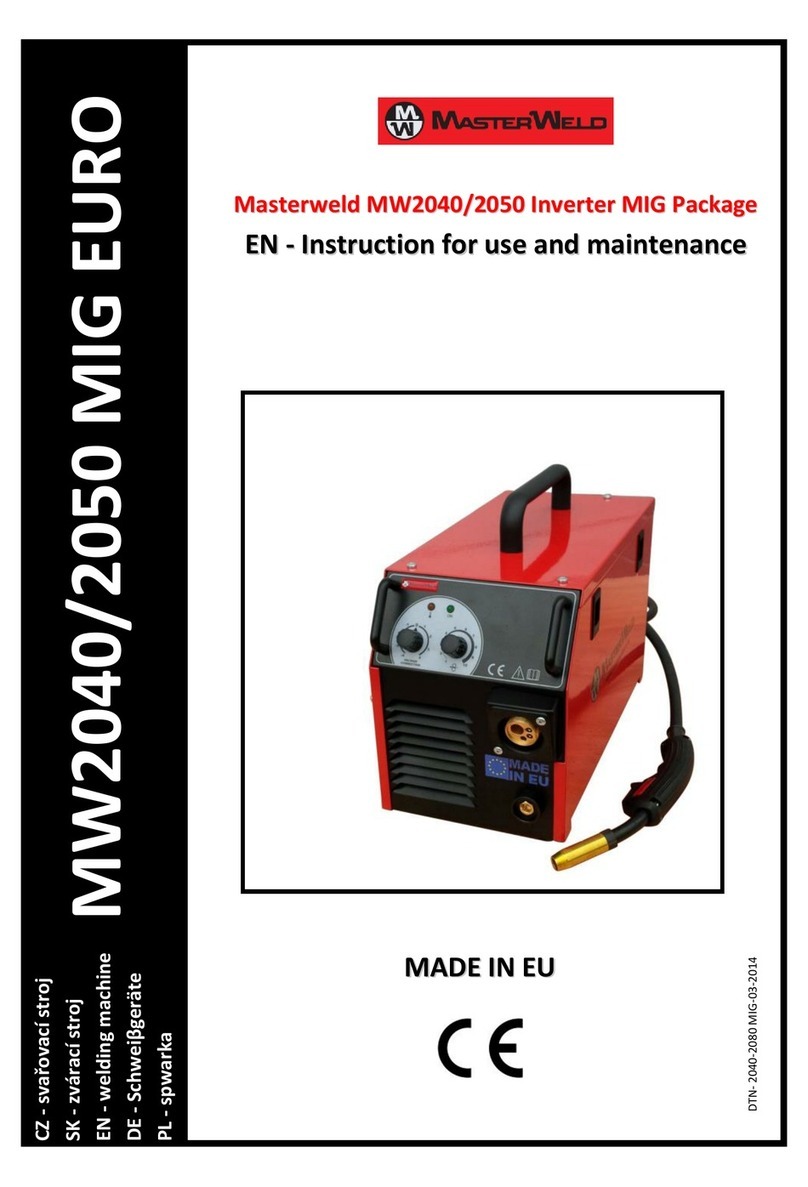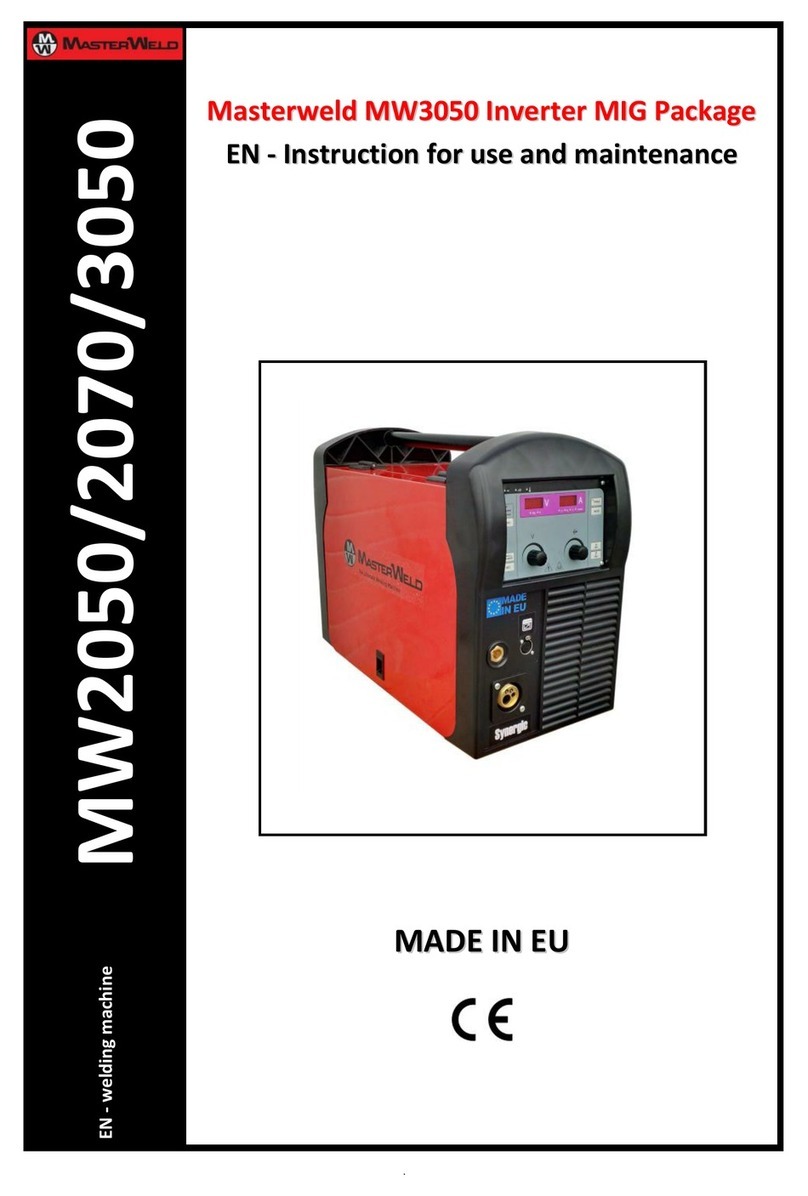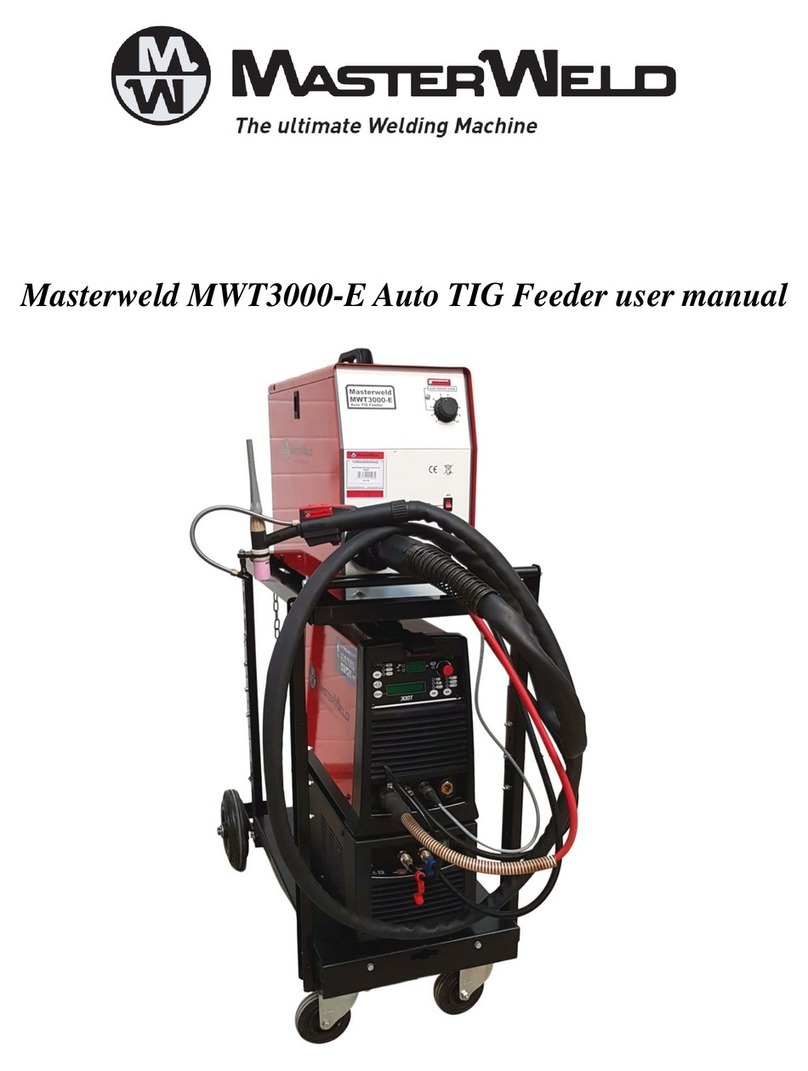CONTENTS
1INTRODUCTION .....................................................................................................................................................................................4
2INSTALLATION ......................................................................................................................................................................................5
2.1 CONNECTIONS TO THE ELECTRICAL MAINS NETWORK .................................................................................................................5
2.2 FRONT PANEL........................................................................................................................................................................................5
2.3 REAR PANEL..........................................................................................................................................................................................5
2.4 PREPARING FOR MMA WELDING........................................................................................................................................................6
2.5 PREPARING FOR TIG WELDING ..........................................................................................................................................................7
2.6 PREPARING FOR MIG/MAG WELDING ...............................................................................................................................................8
2.6.1 WIRE SPOOL POSITIONING.......................................................................................................................................................................................... 8
2.6.2 POSITIONING THE WIRE IN THE WIRE FEEDER........................................................................................................................................................ 8
2.6.3 CONNECTIONS TO SOCKETS ...................................................................................................................................................................................... 9
3COMMISSIONING.................................................................................................................................................................................11
3.1 USER INTERFACE ...............................................................................................................................................................................11
3.2 UNIT POWER-UP..................................................................................................................................................................................13
3.3 RESET (LOAD FACTORY SETTINGS) ................................................................................................................................................13
3.4 GAS FLOW ADJUSTMENT...................................................................................................................................................................14
3.5 ALARMS MANAGEMENT .....................................................................................................................................................................14
4WELDING SETTINGS...........................................................................................................................................................................15
4.1 TORCH TRIGGER MODES ..................................................................................................................................................................15
4.2 SELECTION OF THE WELDING MODE AND TORCH TRIGGER PROCEDURE...............................................................................16
4.3 PARAMETERS ACTIVATION ...............................................................................................................................................................16
4.4WELDING PARAMETERS ....................................................................................................................................................................17
4.5 ELECTRODE WELDING (MMA) ...........................................................................................................................................................18
4.5.1 PARAMETERS SETTING: WELDING CURRENT ........................................................................................................................................................ 18
4.5.2 PARAMETERS SETTING: HOT-START....................................................................................................................................................................... 18
4.5.3 PARAMETERS SETTING: ARC FORCE ...................................................................................................................................................................... 18
4.6 DC TIG WELDING.................................................................................................................................................................................18
4.6.1 PARAMETERS SETTING: WELDING CURRENT ........................................................................................................................................................ 18
4.6.2 PARAMETERS SETTING: POST GAS TIME ............................................................................................................................................................... 18
4.7 MIG/MAG WELDING.............................................................................................................................................................................19
4.7.1 PARAMETERS SETTING: MIG/MAG WELDING VOLTAGE ....................................................................................................................................... 19
4.7.2 PARAMETERS SETTING: WIRE FEED RATE............................................................................................................................................................. 19
4.7.3 PARAMETERS SETTING: INDUCTANCE SETTING ................................................................................................................................................... 19
4.7.4 PARAMETERS SETTING: POST GAS TIME ............................................................................................................................................................... 19
4.7.5 PARAMETERS SETTING: SPEED LIMIT ..................................................................................................................................................................... 19
4.7.6 ADJUSTMENT WELDING PARAMETERS PANEL ...................................................................................................................................................... 20
5TECHNICAL DATA...............................................................................................................................................................................21
6SPARE PARTS .....................................................................................................................................................................................23
6.1 WIRE FEED MOTOR ............................................................................................................................................................................25
6.2 WIRE FEEDER ROLLS.........................................................................................................................................................................26
7ELECTRICAL DIAGRAM......................................................................................................................................................................27
7.1 MICROMAG 301 PLUS .........................................................................................................................................................................27

































